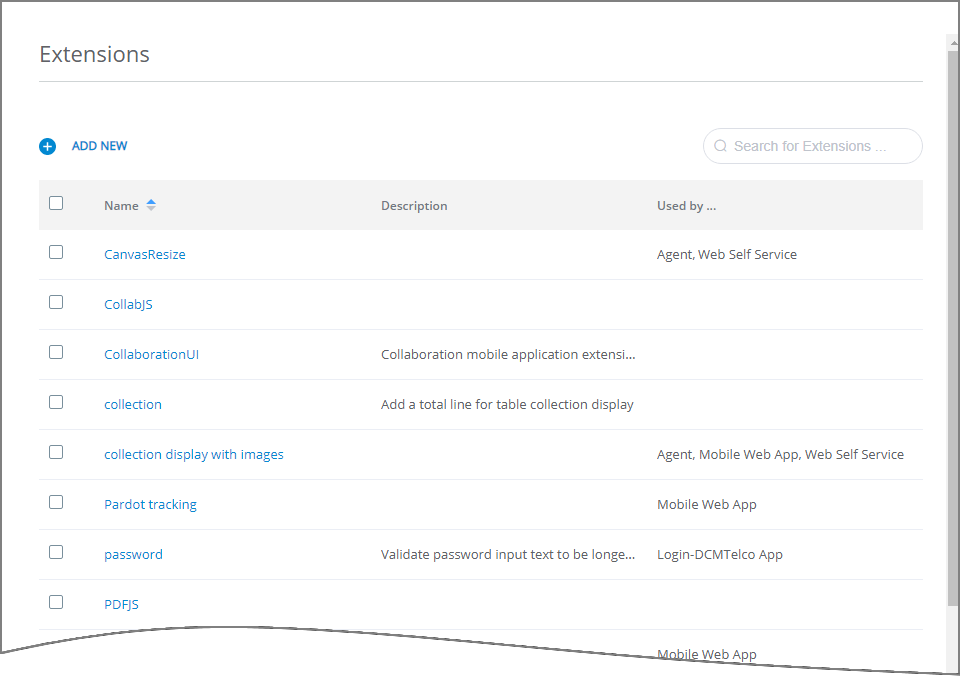Application Extensions: Overview
X‑Platform enables you to extend the standard behavior of a client application using Application Extensions.
Extensions are JavaScript code snippets that are typically added to handle specific organizational needs, extending or overriding the default behavior of the client. You can create an unlimited number of Extensions for almost any Application in your account.
Extensions do not require the use of X‑Platform-specific code. They can contain any valid JavaScript code – even plug-in code obtained from a third-party provider. You can also load separate JavaScript or CSS files dynamically from within an Extension.
Extensions are loaded into the web page Document Object Model (DOM) in a pre-defined order for the specified client.
For example, the following shows an Extension written to support swipe gestures for page navigation in a Mobile Web application:
 |
The code above initializes the Extension, accesses the Application, and specifies the Extension point to extend (i.e., pageRenderer). For detailed information on how to write Extensions, see Creating Application Extensions.
Managing Extensions
You use the Extensions page to view and manage Extensions defined for your account. You access the page from the Resources menu of the X-Console.
 |
The Extensions page displays basic information about each Extension, including a list of Applications where it is currently being used. Clicking a specific Extension name will display its JavaScript code.
Extension Authoring Requirements
Note
Only a user with the Role of Account Admin or higher is authorized to create and work with application Extensions.
Extensions are a very powerful X‑Platform tool and should be written and managed by developers who are completely familiar with the X‑Platform client architecture. Authors of Extensions should also be experienced working with:
JavaScript and CSS
HTML
jQuery libraries
Ajax calls
Browser inspection and debugging